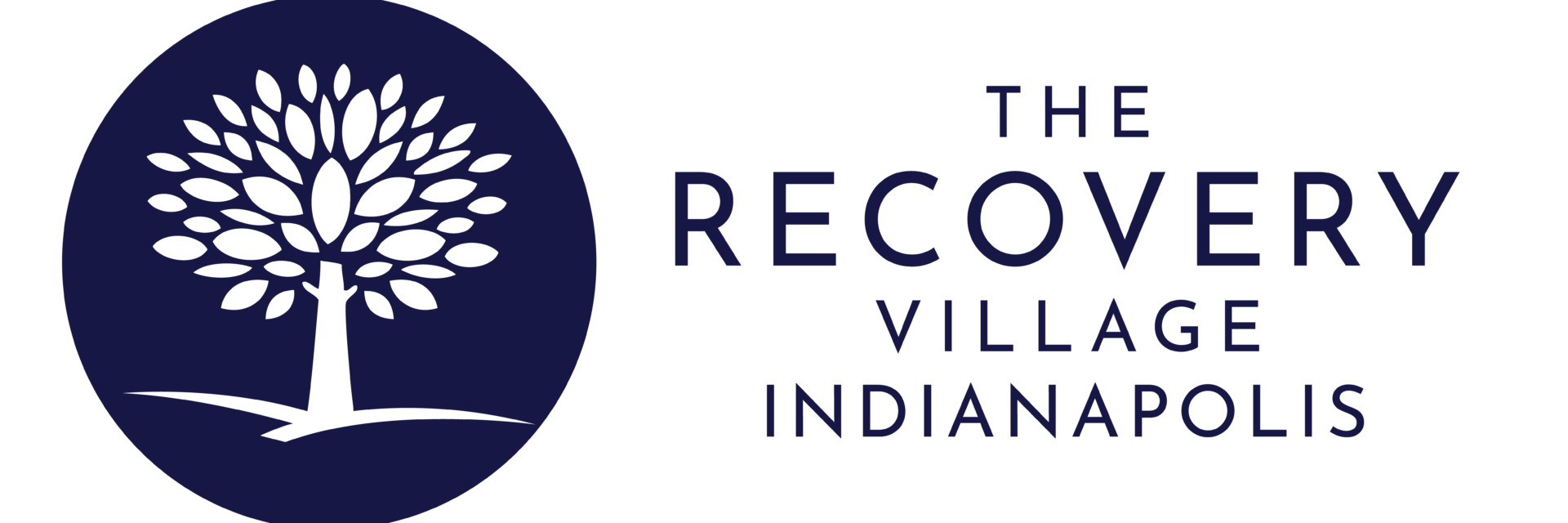What Is Medication-Assisted Treatment (MAT)?: Uses, Benefits & What To Expect
Written by The Recovery Village Indianapolis
Key Takeaways
- Many insurance plans, including Medicaid, cover MAT, with advocacy groups urging broader coverage to improve access to this evidence-based treatment.
- MAT involves using medications to reduce cravings and withdrawal symptoms, aiding recovery from substance use disorders by replacing addictive drugs with safer alternatives.
- MAT significantly improves health, increases treatment retention, and reduces the risk of relapse, legal issues, and transmission of infectious diseases.
- Studies show MAT reduces opioid overdose deaths by 82% and lowers relapse rates, proving highly effective for both opioid and alcohol use disorders.
- Despite benefits, access to MAT is limited due to provider restrictions and costs, with only a small percentage of physicians approved to offer it.
- Approved medications include methadone, buprenorphine, and naltrexone, each helping manage opioid addiction in different ways.
- The FDA approves disulfiram, naltrexone, and acamprosate for treating alcohol use disorders, helping reduce cravings and prevent relapse.
- MAT is often used alongside rehab programs to manage addiction long-term, with recommendations to continue treatment for at least 12 months.
- The Recovery Village Indianapolis offers comprehensive MAT services, including detox, rehabilitation, and aftercare, supported by a team of skilled professionals.
- MAT medications like methadone and buprenorphine are considered safe for pregnant women and can reduce the risk of neonatal abstinence syndrome.
What Is MAT?
The idea behind medication-assisted treatment (MAT) is to replace addictive drugs with similar drugs that don’t give the same “high” feeling. It’s like tricking the brain into thinking the addictive drug is still there without the negative effects. Unfortunately, some people don’t agree with this approach, and it’s causing issues for healthcare providers who want to offer this type of treatment to their patients.
MAT Benefits
The greatest benefit to MAT is the ability to quit using opioids that reinforce addiction. For some people, long-term MAT is the only way to go from struggling with a debilitating substance use disorder to a healthy, productive lifestyle. Many studies have shown that MAT drugs are safe and highly effective.
Other key benefits of MAT include:
- Improved health and well-being
- Increased treatment retention and long-term abstinence
- Reduced risk for transmission of infectious disease
- Reduced risk for legal consequences of illegal drug use
MAT Effectiveness
A recent study found that MAT can reduce deaths related to opioid overdose by 82%. Another study showed that people who received MAT after quitting opioids were less likely (49%) to relapse than those who did not (93%). Even after 3.5 years of treatment, those who received MAT were more likely to stay away from opioid abuse. These findings show that MAT can be an effective treatment option for people struggling with opioid addiction.
Although there is limited data on the effectiveness of MAT for alcohol use disorders, the current research suggests that it can be highly effective. A recent report by SAMHSA (Substance Abuse and Mental Health Services Administration) highlighted that medications are not used as much as they could be in treating alcohol use disorder. This suggests an opportunity to improve treatment outcomes by making better use of these medications.
MAT Accessibility
Although numerous restrictions still exist, the 2018 (SUPPORT) Act gave healthcare providers increased flexibility to prescribe MAT.
MAT providers are limited to seeing 100 patients in their first year, and if they meet several criteria, they can increase their patient load to a maximum of 275 patients after a year. Very few patients have access to MAT, with only 2.2% of physicians approved to provide MAT. MAT may also not be affordable for many people at over $100 per week.
How To Receive MAT
MAT may be recommended for those seeking professional rehabilitation. Early interventions, such as Screening, Brief Intervention and Referral to Treatment (SBIRT), can help identify problematic drug use and guide appropriate treatment strategies.
It is important to note that SAMHSA certification is necessary for treatment programs to offer MAT treatment.
MAT approved by the FDA, is limited to treating opioid and alcohol use disorders. Despite the growing evidence suggesting the effectiveness of MAT in treating methamphetamine use disorders, the FDA has yet to approve it as a viable treatment option.
MAT for Opioid Use Disorder
MAT, or medication-assisted treatment, is a medical approach to treating opioid use disorder that combines medications with counseling and behavioral therapies to help people overcome addiction to opioids. This comprehensive approach helps reduce cravings and withdrawal symptoms, making it easier for people to recover and lead healthier lives.
Tragic losses have been caused by the opioid crisis throughout America in recent years, affecting all demographics. Between 1999 and 2017, over 700,000 deaths related to drug overdose occurred, with almost 68% associated with an illegal or prescription opioid.
Opioid Treatment Programs
An opioid treatment program (OTP) is a specialized medical program that provides comprehensive treatment for those struggling with opioid use disorder. These programs offer medication-assisted treatment (MAT), cognitive behavioral therapy, vocational rehabilitation and education. To provide patient care, OTPs must undergo a stringent accreditation process successfully.
Opioid Addiction Medications
Opioid addiction medications, when used as part of a comprehensive treatment program that includes counseling and therapy, can be highly effective in managing opioid addiction and promoting recovery. MAT for opioid use disorders has three options approved by the FDA:
- Methadone: Methadone is a medication that helps people addicted to opioids. It can control cravings and reduce withdrawal symptoms. Methadone is safe to use when taken as directed, and it doesn’t make people feel high or reinforce addiction. However, there is a risk of misuse if someone takes too much of it.
- Buprenorphine: Buprenorphine, known as Subutex or Buprenex, is a medication used to treat opioid addiction. It works by partially activating the same receptors in the brain that opioids do but with less risk of addiction and overdose. Additionally, buprenorphine has a built-in safety feature that prevents it from causing additional effects if someone takes too much. To make it even safer, it is often combined with another medication called naloxone, which helps prevent misuse.
- Naltrexone: Naltrexone works differently than other medications like methadone and buprenorphine by completely blocking the effects of opioids in the brain. However, when starting naltrexone treatment, some people may experience increased withdrawal symptoms for the first few days because any opioids still in the body can’t produce the usual effects. That’s why it’s important to abstain from opioids for at least a week before starting naltrexone. Naltrexone is considered safe and is not addictive.
Using MAT drugs for OUD requires a minimum of three months of use. Addiction specialists recommend using them for at least 12 months for maximum benefits.
MAT for Alcohol Abuse
In America, there is a large problem with alcohol use disorders, as approximately 28.6 million adults met the criteria for this disorder in 2021. Moreover, alcohol is responsible for causing 88,000 preventable deaths annually. Motivated people can overcome their addiction with the help of MAT for alcohol use disorders and alcohol withdrawal.
Medications for Alcoholism
The FDA has approved three medications for treating alcohol use disorders:
- Disulfiram: Disulfiram, also known as Antabuse, is a drug approved by the FDA to help people with alcohol use disorder. It works by stopping the body from breaking down alcohol in the usual way. If someone drinks alcohol while taking disulfiram, they will experience an unpleasant physical reaction, including throwing up, a headache and an increased heart rate. Although this drug doesn’t help reduce the desire to drink, it helps people stay away from alcohol by making them feel sick when they consume it.
- Naltrexone: Naltrexone is a medication that can help people reduce their drinking habits. It blocks how alcohol affects the brain, making it less addictive and reducing the urge to drink. It is often given as a long-lasting injection so people can stick to the treatment better.
- Acamprosate: Acamprosate is a medication that helps people with alcohol addiction. It works by regulating certain pathways in the brain that get disrupted by alcohol misuse, which in turn helps reduce the urge to drink. One of the benefits of Acamprosate is that it is safe for people with liver problems since it is metabolized in the kidneys.
What To Expect With MAT and Rehab
If someone is struggling with addiction to opioids or alcohol and wants to get help, they will first go through screenings to test the severity of their addiction. Based on the results, a plan will be made to help them recover. Sometimes, they must undergo medically supervised detoxification before starting any treatment. This is important because it gives their body enough time to eliminate all drug traces.
After someone completes medical detox, they may choose to attend a program where they can continue to receive care during their early recovery. This is when MAT can be very helpful. Some people may choose an outpatient program that allows them to get support while still being able to handle their usual daily activities. However, if someone is at high risk for relapse, it’s important that they attend a residential program before moving to an outpatient program.
Managing symptoms of addiction and withdrawal is a long-term process that requires the use of MAT drugs, and it is recommended that people remain on these drugs for at least one year. While some people view MAT as a means to achieve complete sobriety, others may opt to participate in MAT programs indefinitely to manage their addiction.
MAT at The Recovery Village Indianapolis
The Recovery Village Indianapolis is a certified MAT provider. Our team of professionals has a deep understanding of addiction, so they are highly skilled in helping patients navigate all aspects of recovery, including managing physical and psychological withdrawal symptoms. Our comprehensive services include medical detox, residential and outpatient rehabilitation and aftercare programs. Contact a Recovery Advocate today to verify your benefits or start the admissions process.
Frequently Asked Questions on Medication-Assisted Treatment
Some common questions about MAT are addressed here.
Can MAT be used if you’re pregnant?
Yes. Methadone, buprenorphine and buprenorphine/naloxone are considered safe for pregnant women and can lower the risk of neonatal abstinence syndrome, a condition that occurs when newborns are born with opioid dependence. Additionally, studies have shown that the combination of buprenorphine/naloxone is safe for people who are breastfeeding.
Does MAT substitute one addiction for another?
No. MAT medications aid people in coping with physical and psychological withdrawal symptoms while breaking the cycle of opioid addiction. For some, MAT is the sole method of successfully abstaining from opioid misuse.
Is there MAT for smoking?
Yes. Nicotine replacement therapy, varenicline and bupropion are FDA-approved medications for treating tobacco use disorders.
How long does medication-assisted treatment last?
According to the FDA, people should continue medication-assisted treatment (MAT) for at least three months. However, research shows that continuing for a minimum of 12 months can lead to the best results. It is important to note that some people may need to continue MAT for the rest of their lives, but it is generally safe and does not cause adverse health effects.
Does insurance cover MAT?
Insurance plans (including Medicaid) can often help pay for medication-assisted treatment (MAT) for substance use disorders. Recently, the American Academy of Family Physicians (AAFP) wrote a letter to The Centers for Medicare & Medicaid Services, urging them to require that all public and private health insurance plans provide coverage for MAT and counseling, as recommended by the FDA. This means people who need MAT can get help and have a better chance of recovery.
Is MAT an evidence-based practice?
Yes. Overwhelming evidence supports the use of MAT in opioid and alcohol use disorders, and preliminary data suggests that MAT will be equally helpful in treating methamphetamine use disorder. However, there are no FDA-approved MAT drugs for methamphetamine.
Evidence shows that medication-assisted treatment (MAT) can be very helpful for people struggling with addiction to opioids and alcohol. Some initial studies also suggest that MAT could be an effective treatment for people with methamphetamine addiction, but there aren’t any FDA-approved medications yet.
Choose Us For Your Recovery Journey
The Recovery Village Indianapolis is a premier addiction treatment facility in Indiana, committed to delivering top-tier, evidence-based care. It’s time to get your life back. Call (317) 754-7784 to talk to a Recovery Advocate today.
Authorship


